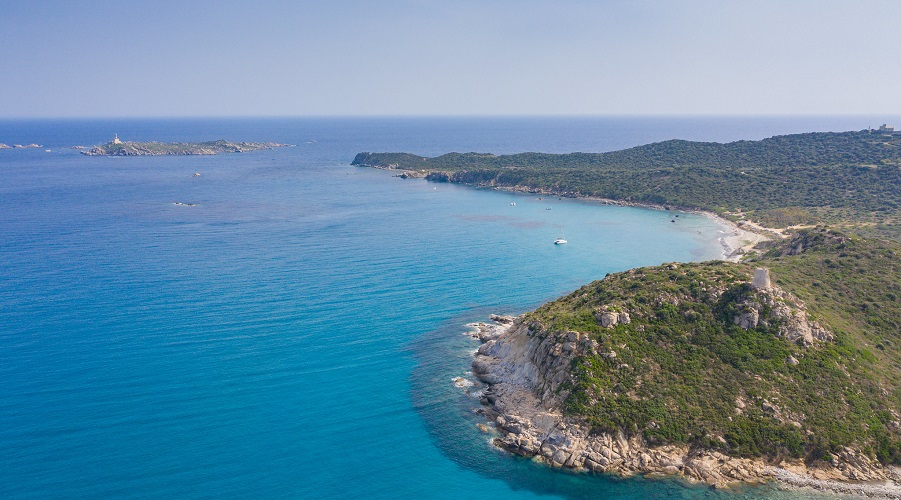
A view from the north on the Marine Protected Area of Capo Carbonara and the island of Cavoli in Sardinia, Italy. Photo by dronepicr, Flickr.
Conserving marine biodiversity, avoiding species extinction and maintaining food security from wild capture fisheries can all be achieved simultaneously if a global, non-regionalized approach to marine spatial management is undertaken by the signatories of IUCN Resolution 50, which calls for the protection of 30 per cent of the ocean by 2030.
In a new paper published in Frontiers in Marine Science, researchers from The University of Auckland and the Sea Around Us initiative at the University of British Columbia’s Institute for the Oceans and Fisheries present a multi-objective solution that, if implemented, could lead to the protection of 89 per cent of the ocean’s Representative Biodiversity Areas and 89 per cent of threatened species or about 860 species, all while maintaining access to fishing grounds that provide 89 per cent of the global catch.
The solution is based on a spatial prioritization of the ocean, which looked at biodiversity hotspots, areas where almost 1,000 threatened species live and fishing grounds where over 2,000 species are caught.
“We analyzed three possible scenarios that took into account the three objectives and two of them showed that protecting 30 per cent of the ocean will not lead to food insecurity, as the majority of catch can be maintained alongside marine conservation,” said Dr. Maria ‘Deng’ Palomares, the Sea Around Us project manager and co-author of the study. “Our multi-objective solution, which we call ‘Scenario 2,’ uses a global approach to ocean management that accounts for resource access for small-scale fisheries, considering that since 2009, more than 90 per cent of catch has come from inshore and continental shelf areas.”
In this scenario, some areas in the Caribbean and the Gulf of Mexico, Australia, the Red, Mediterranean and Tasman Seas, and various islands in the western Pacific Ocean are to be prioritized for the protection of biodiversity and threatened species. At the same time, however, some sections of western South America, West Africa, the northeast Atlantic, south and southeast Asia and the Yellow Sea are to remain open to low-impact fishing, thus balancing the loss of catch in the other ecologically important areas.
The analyses also compared the effectiveness of protecting threatened species and biodiversity in the high seas versus countries’ exclusive economic zones. They found that the majority of the threatened species studied, particularly seabird species and the iconic bluefin tuna, venture far offshore and, thus, justify extending marine protection and fisheries management in the high seas.
“In addition to hosting threatened species, many high biodiversity areas are in the high seas, while fishing there only accounts for 2.5 per cent of the world’s catch,” Tamlin Jefferson, Ph.D. candidate at The University of Auckland and lead author of the study, said. “This, combined with the fact that high seas fisheries have low profitability, supports our finding of the importance of closing at least 22 per cent of the high seas to fishing.”
The study also shows the importance of incorporating resource access for small-scale communities when designing global ocean management, such that local fisher livelihoods are considered within conservation scenarios.
“Our results help to inform discussions about future spatial management of the global ocean, by illustrating potential win-win solutions for both conservation and fishery benefits,” Dr. Carolyn Lundquist, from The University of Auckland and co-author of the study, said.
The paper “Safeguarding seafood security, marine biodiversity and threatened species: Can we have our fish and eat it too?” was published in Frontiers in Marine Science doi: 10.3389/fmars.2022.826587

